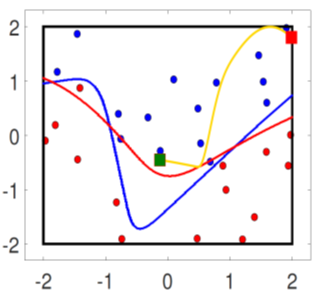Label Sanitization against Label Flipping Poisoning Attacks
Andrea Paudice, Luis Muñoz-González, Emil C. Lupu. 2018. Label Sanitization against Label Flipping Poisoning Attacks. arXiv preprint arXiv:1803.00992.
Many machine learning systems rely on data collected in the wild from untrusted sources, exposing the learning algorithms to data poisoning. Attackers can inject malicious data in the training dataset to subvert the learning process, compromising the performance of the algorithm producing errors in a targeted or an indiscriminate way. Label flipping attacks are a special case of data poisoning, where the attacker can control the labels assigned to a fraction of the training points. Even if the capabilities of the attacker are constrained, these attacks have been shown to be effective to significantly degrade the performance of the system. In this paper we propose an efficient algorithm to perform optimal label flipping poisoning attacks and a mechanism to detect and relabel suspicious data points, mitigating the effect of such poisoning attacks.
